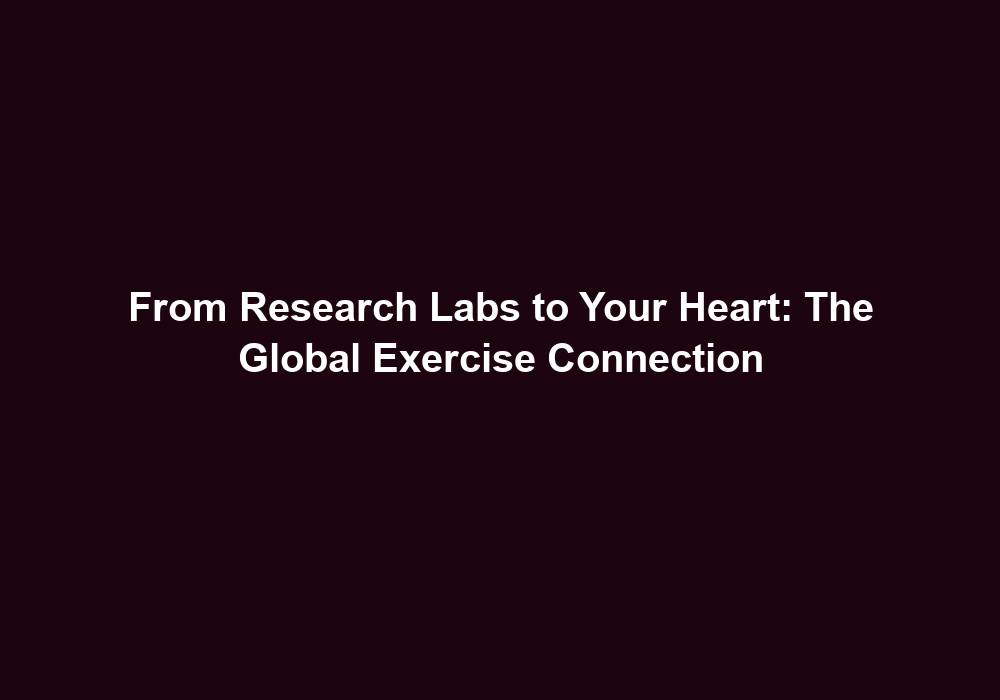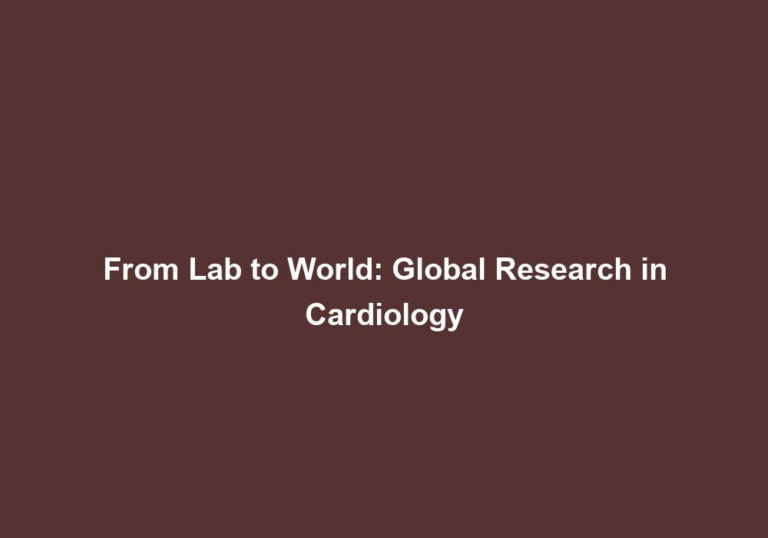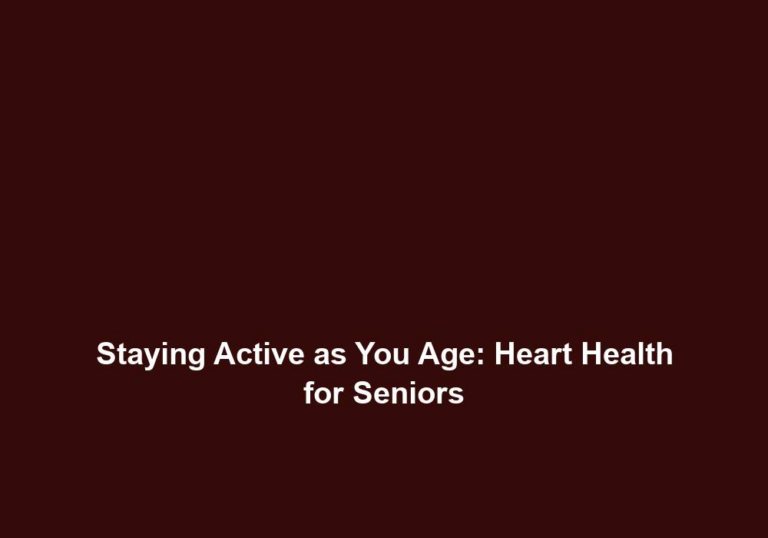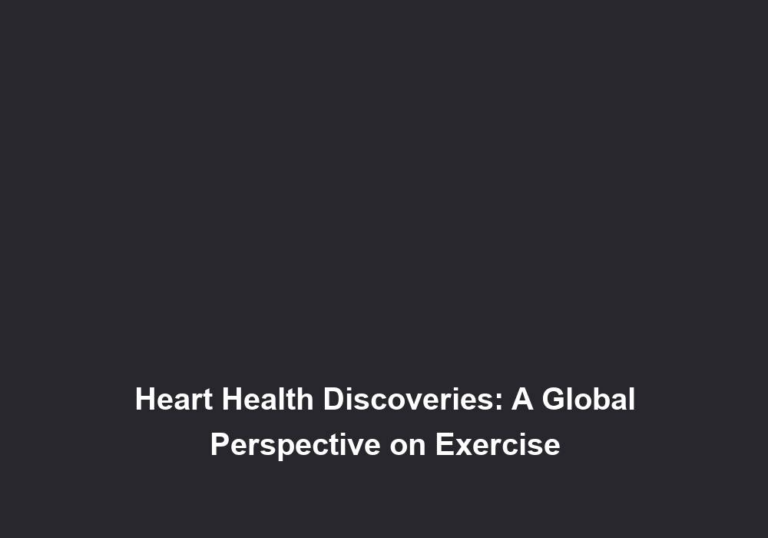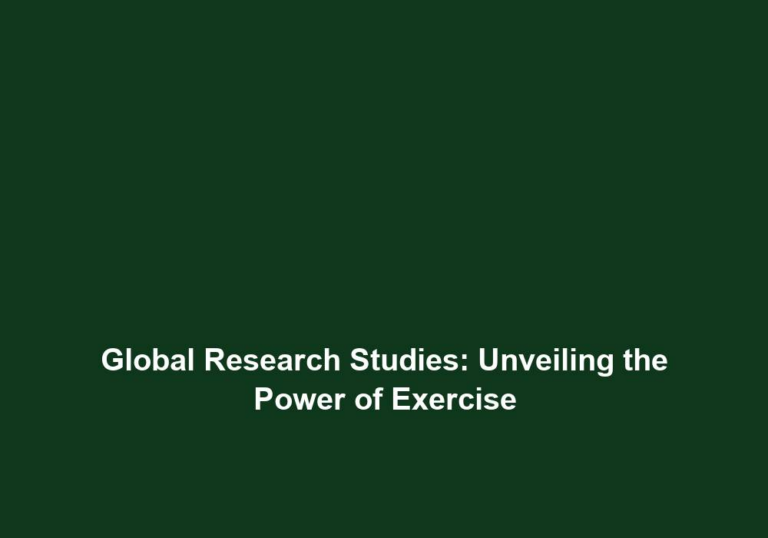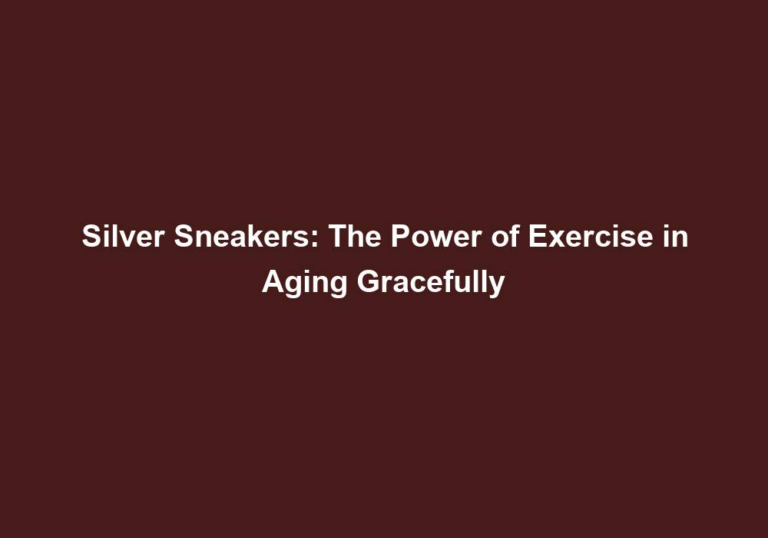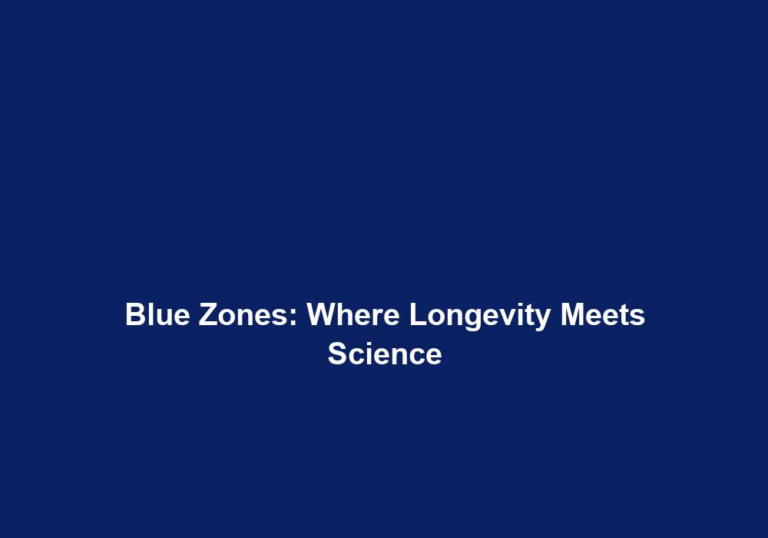From Research Labs to Your Heart: The Global Exercise Connection
In today’s fast-paced world, where technology has become an integral part of our lives, it is easy to overlook the importance of physical activity. However, numerous studies have shown the immense benefits of exercise on our overall well-being. From reducing the risk of chronic diseases to improving mental health, exercise has the power to transform our lives.
The Role of Research Labs
Research labs play a crucial role in unraveling the mysteries of exercise and its impact on our bodies. These labs are equipped with state-of-the-art facilities and staffed with dedicated scientists who are constantly striving to understand the mechanisms behind exercise-related health benefits. By conducting rigorous experiments and clinical trials, they provide valuable insights that guide the formulation of evidence-based exercise recommendations.
Research labs are at the forefront of scientific discovery, constantly pushing the boundaries of knowledge in the field of exercise. They investigate various aspects of exercise, such as its effects on different body systems, the optimal duration and intensity of exercise, and the mechanisms through which exercise enhances our well-being. Through their research, they have made significant contributions to our understanding of how exercise benefits our cardiovascular health, weight management, mental well-being, bone health, and immune system.
Uncovering the Health Benefits
Over the years, research labs have unearthed a wealth of information about the positive effects of exercise. Here are some key findings:
-
Cardiovascular Health: Regular exercise has been shown to improve cardiovascular health by strengthening the heart muscle, lowering blood pressure, and reducing the risk of heart disease. It enhances the heart’s ability to pump blood efficiently, improving overall circulation and oxygen delivery to the body’s tissues. Exercise also helps regulate cholesterol levels, reducing the buildup of plaque in the arteries and lowering the risk of cardiovascular events.
-
Weight Management: Engaging in physical activity helps burn calories, contributing to weight loss and weight maintenance. Exercise increases the body’s energy expenditure, helping to create a calorie deficit necessary for shedding excess pounds. It also helps to preserve lean muscle mass, which is crucial for maintaining a healthy metabolism. When combined with a balanced diet, exercise can be a powerful tool in managing body weight.
-
Mental Well-being: Exercise is not just beneficial for the body; it also has a profound impact on mental health. Research has linked physical activity to reduced symptoms of depression and anxiety, improved cognitive function, and enhanced overall well-being. Exercise stimulates the release of endorphins, which are natural mood elevators, promoting feelings of happiness and relaxation. It also provides a distraction from negative thoughts and helps to improve self-esteem and body image.
-
Bone Health: Weight-bearing exercises, such as walking or weightlifting, can help increase bone density and reduce the risk of osteoporosis, especially in older adults. When we engage in weight-bearing exercises, our bones experience a slight stress, which triggers the body to build new bone tissue. Over time, this strengthens the bones and reduces the risk of fractures and bone loss. Exercise also helps to improve balance and coordination, further reducing the risk of falls and related injuries.
-
Immune System: Exercise has been found to boost the immune system, making individuals less susceptible to illnesses and infections. Regular physical activity enhances the circulation of antibodies and white blood cells, which are crucial for fighting off pathogens. It also reduces the release of stress hormones, such as cortisol, which can suppress the immune system. By strengthening the immune system, exercise helps to prevent and mitigate the impact of common illnesses, such as colds and flu.
Global Exercise Guidelines
Based on the extensive research conducted by these labs, various organizations and health authorities have developed exercise guidelines to promote physical activity worldwide. These guidelines aim to provide individuals with clear recommendations on the type, duration, and intensity of exercise needed to reap the maximum benefits. Here are some globally recognized exercise guidelines:
World Health Organization (WHO)
The World Health Organization (WHO) recommends that adults aged 18-64 should engage in at least 150 minutes of moderate-intensity aerobic activity or 75 minutes of vigorous-intensity aerobic activity per week. Additionally, muscle-strengthening activities should be performed at least twice a week. Moderate-intensity activities include brisk walking, cycling, or swimming, while vigorous-intensity activities include jogging, running, or playing sports.
American Heart Association (AHA)
According to the American Heart Association (AHA), adults should aim for at least 150 minutes of moderate-intensity aerobic exercise or 75 minutes of vigorous-intensity aerobic exercise per week. Additionally, they should incorporate strength training exercises at least two days a week. Moderate-intensity exercises include brisk walking, dancing, or hiking, while vigorous-intensity exercises include running, cycling at a high speed, or playing basketball.
Centers for Disease Control and Prevention (CDC)
The Centers for Disease Control and Prevention (CDC) advises adults to engage in at least 150 minutes of moderate-intensity aerobic activity or 75 minutes of vigorous-intensity aerobic activity per week. They also recommend incorporating muscle-strengthening activities on two or more days per week. Moderate-intensity activities include brisk walking, water aerobics, or gardening, while vigorous-intensity activities include jogging, swimming laps, or playing tennis.
These guidelines serve as a roadmap for individuals looking to enhance their overall health and well-being through regular exercise. It is important to consult with healthcare professionals to determine the most suitable exercise routine based on individual health conditions and fitness levels.
Breaking Barriers: Promoting Global Exercise
Despite the wealth of scientific evidence supporting the benefits of exercise, there are still barriers that prevent many individuals from leading an active lifestyle. Addressing these barriers and promoting exercise on a global scale requires a multi-faceted approach. Here are some strategies that can be implemented:
-
Education and Awareness: Raising awareness about the importance of exercise and its benefits is essential. This can be done through educational campaigns, public health initiatives, and social media platforms. Providing accurate and accessible information about the health benefits of exercise can motivate individuals to incorporate physical activity into their daily lives.
-
Accessible Facilities: Providing easily accessible exercise facilities, such as parks, community centers, and affordable gyms, can encourage more people to engage in physical activity. Investing in infrastructure that supports exercise, such as well-maintained walking paths and bike lanes, can also promote active transportation and make physical activity a convenient option.
-
Incentives and Rewards: Offering incentives and rewards for regular exercise can serve as powerful motivators. This can be in the form of discounts on gym memberships, rewards programs, or recognition for achieving fitness goals. Employers can also consider implementing workplace wellness programs that provide incentives for employees to engage in physical activity, such as gym membership reimbursements or extra time off for exercise.
-
Corporate Wellness Programs: Encouraging businesses to implement wellness programs that promote physical activity can lead to a more active workforce, resulting in improved productivity and reduced healthcare costs. These programs can include fitness challenges, on-site exercise classes, and health screenings. Employers can also provide resources and support for employees to engage in physical activity during working hours, such as designated exercise breaks or access to fitness facilities.
-
Engaging Communities: Organizing community-based events, group activities, and sports tournaments fosters a sense of belonging and creates opportunities for individuals to engage in exercise in a social setting. Local governments and organizations can collaborate to organize fitness events, such as charity runs or community sports leagues. By creating a supportive and inclusive environment, communities can inspire individuals to adopt and maintain an active lifestyle.
By implementing these strategies, we can work towards breaking down the barriers to exercise and promoting a healthier and more active global population. It is important to recognize that everyone’s journey towards a more active lifestyle is unique, and support systems should be in place to accommodate diverse needs and preferences.
Conclusion
The invaluable work conducted in research labs around the world has shed light on the powerful connection between exercise and our overall well-being. From improving cardiovascular health to enhancing mental well-being, the benefits of exercise are undeniable. Global exercise guidelines provide individuals with evidence-based recommendations to guide their physical activity routines. By breaking barriers and promoting exercise on a global scale, we can pave the way for a healthier and happier future. Let us embrace the research findings and take a step towards a more active lifestyle today.
(This article has been written in markdown format)

